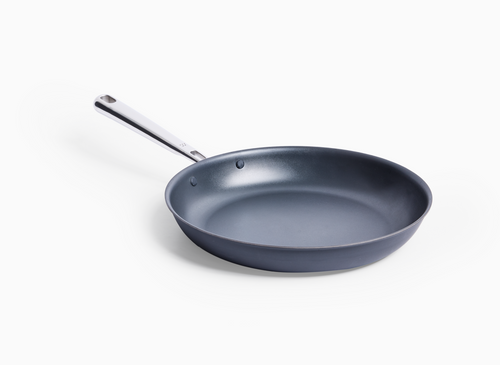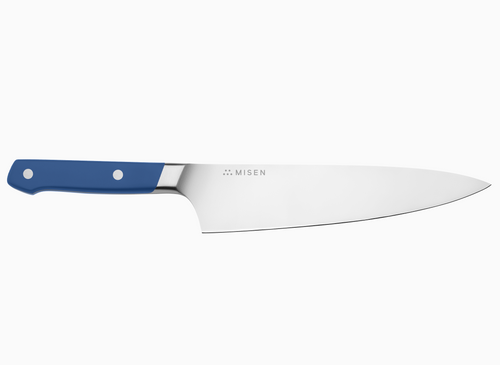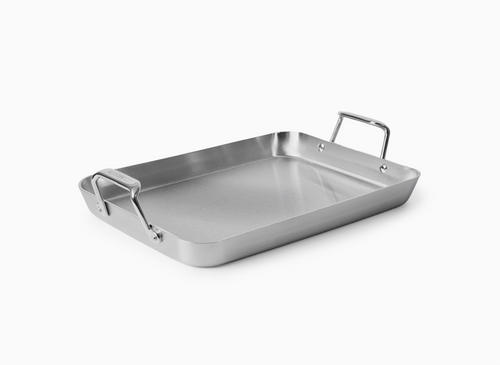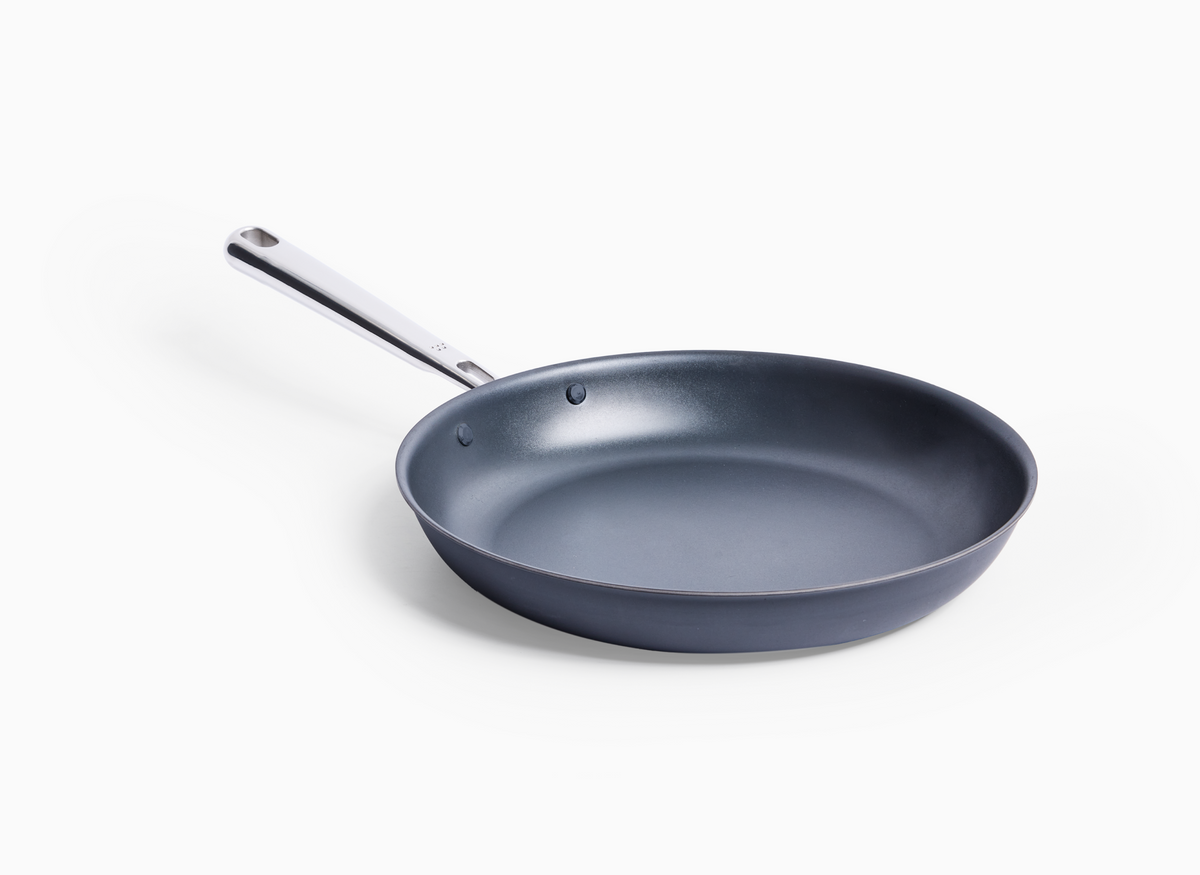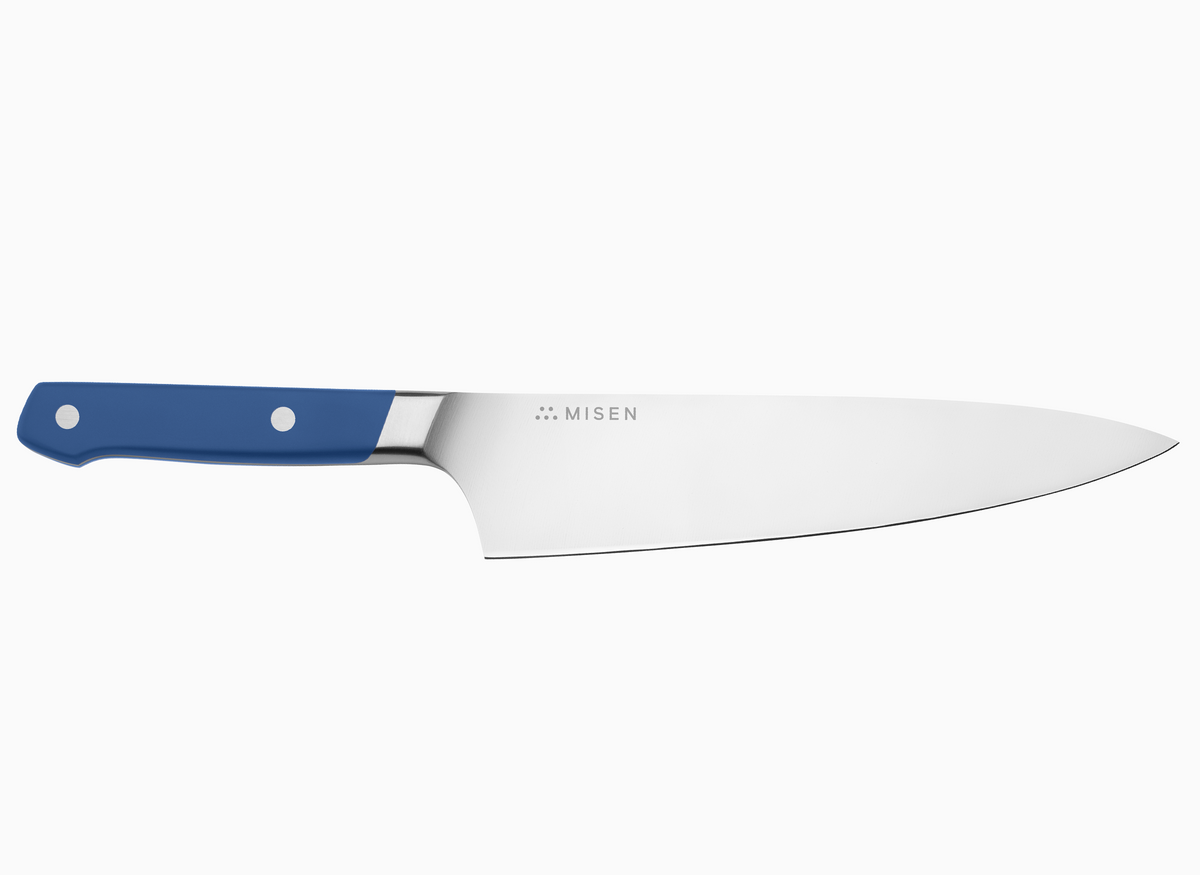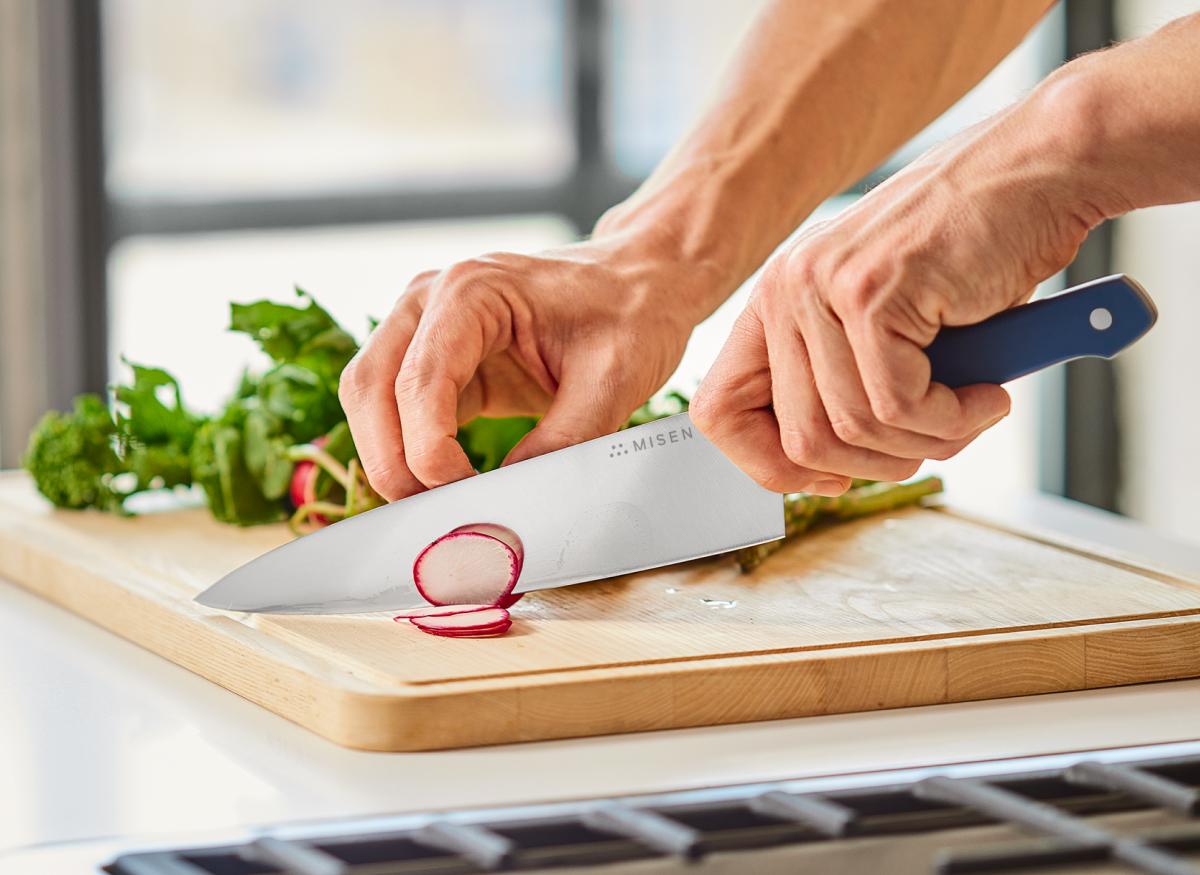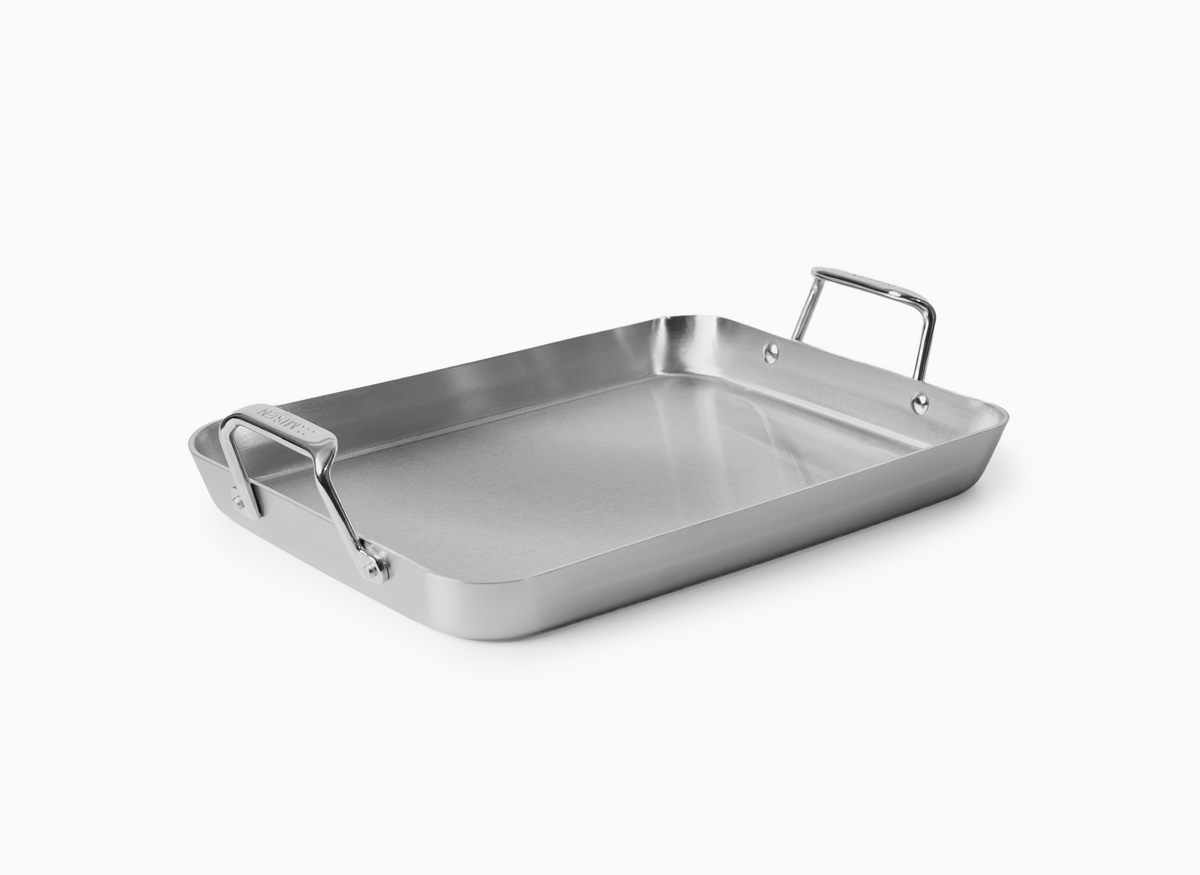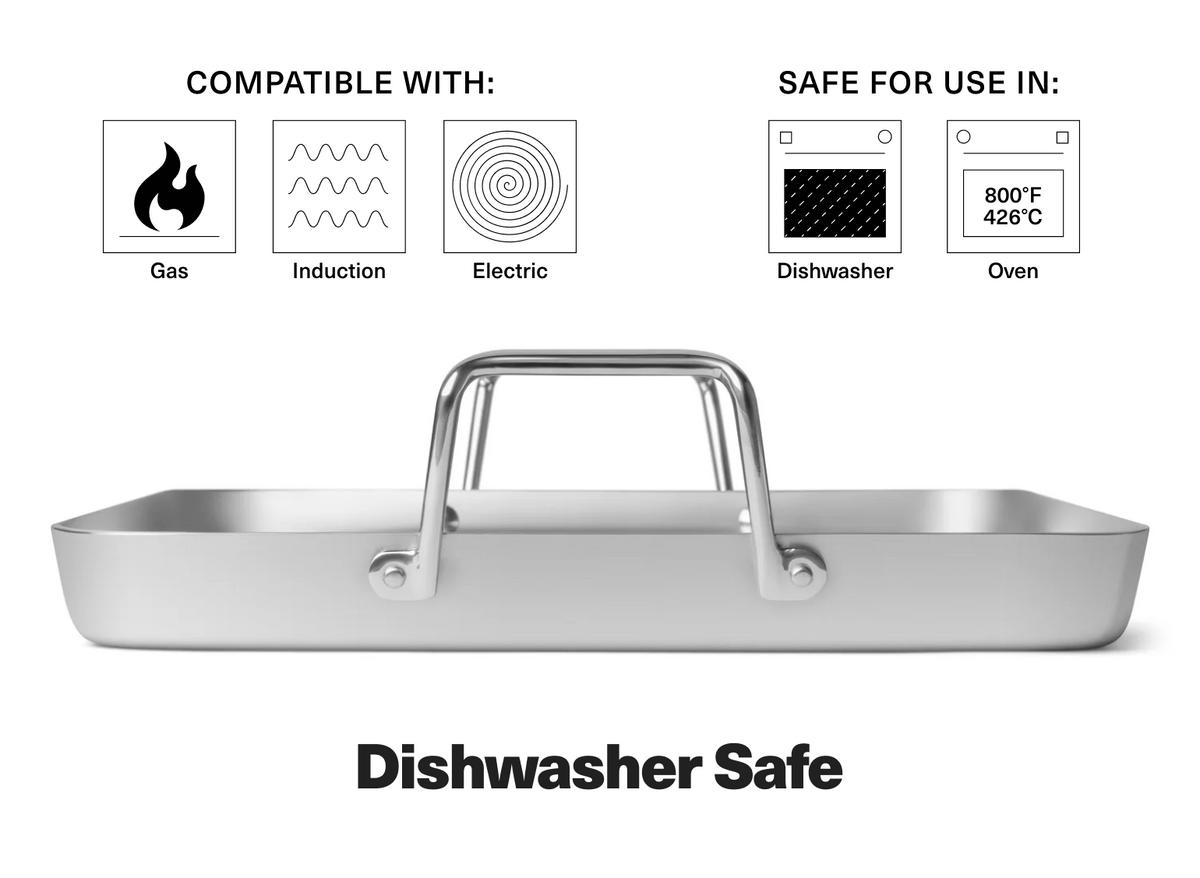Stainless Steel vs Ceramic Cookware: Which Reigns Supreme?
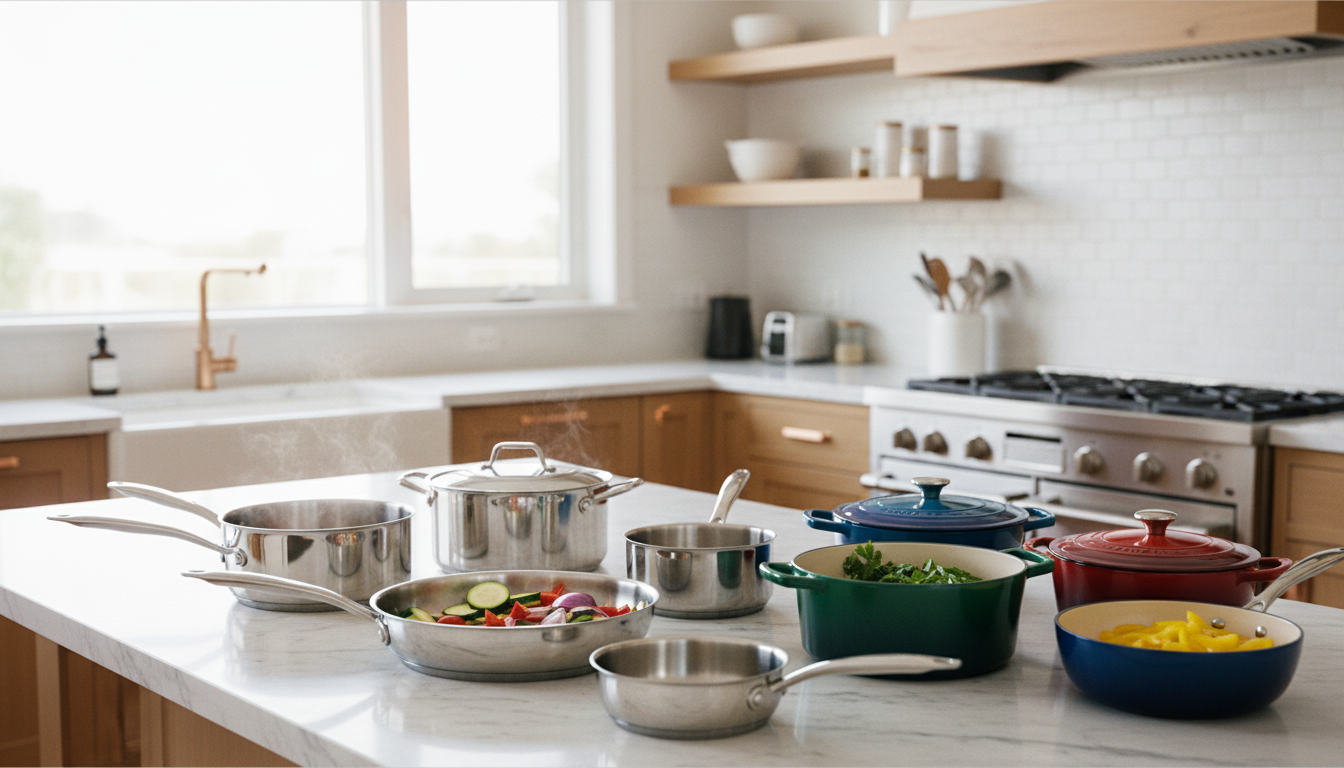
This definitive cookware guide settles the stainless-versus-ceramic debate by revealing how each material’s molecular makeup, heat personality, and lifespan directly affect what lands on your plate: stainless steel’s aluminum-or-copper-cored layers deliver the rapid, scorching response that professionals rely on for golden sear marks and rich pan sauces, while ceramic’s microporous body offers forgiving, oil-free release that keeps eggs and fish intact and keeps forever chemicals off your menu. Readers learn why a $200 stainless skillet can outlive three generations of $30 ceramic pans, how to decode 18/10 stamps and warranty fine print, when metal leaching or coating chips actually matter, and what handle weight, recycling headaches, and state PFAS bans mean for daily cooking. By pairing stainless for high-heat heroics with ceramic for gentle, low-fat convenience, home cooks can build a complementary arsenal that maximizes flavor, health, and budget—turning the kitchen showdown into a strategic win for every recipe and every cook.
Introduction: The Kitchen Showdown
Your choice between stainless steel's professional-grade versatility and ceramic's convenient non-stick performance determines whether you'll master high-heat searing or effortless low-oil cooking.
Why Your Cookware Choice Defines Your Cooking Experience
Your cookware choice shapes every meal you make. The right pan can be the difference between perfectly seared chicken and a stuck, torn mess—or between vibrant vegetables and mushy, flavorless sides. Stainless steel won't discolor your food or add metallic flavors, letting the true taste of your ingredients shine through [1].
Meanwhile, ceramic cookware has its own advantages, with research showing it can actually extract more flavor from your food [2]. But here's what really matters: each material creates a completely different cooking environment. Some excel at high-heat searing while others handle delicate sauces with ease.
Understanding these differences helps you pick the right tool for each cooking task—because great meals start with the right cookware.
The Rising Debate Between Traditional and Modern Options
The cookware debate has shifted dramatically over the years. What started with basic aluminum pots has evolved into a choice between time-tested materials and modern innovations. Stainless steel earned its place in professional kitchens back in 1930s France and hasn't left since [6]. You'll spot it in every restaurant kitchen and cooking show for good reason—it's virtually indestructible and handles any cooking technique you throw at it.
On the flip side, ceramic cookware brings something different to the table. Today's ceramic isn't your grandmother's pottery—it's modern metal cookware with advanced coatings that create naturally non-stick surfaces without the chemicals that concern many home cooks [4]. Here's where it gets interesting: each material attracts different cooking styles. If you love the idea of [professional-grade cookware](https://misen.
com/products/stainless-steel-skillet) that can sear, sauté, and sauce with equal skill, stainless steel speaks your language. But if you're after easy cleanup and cooking with less oil, ceramic's convenience factor is hard to beat [4]. The truth is, experienced cooks often keep both on hand—using stainless for high-heat techniques and ceramic for eggs, fish, and other delicate foods [4].
What We'll Cover in This Ultimate Comparison
Ready to find your perfect cookware match? We'll walk you through everything that actually matters when choosing between stainless steel and ceramic. First up: understanding what these materials are really made of and how that affects your cooking.
Then we'll dig into the performance differences you'll notice every day—from how evenly they heat to how long they'll last in your kitchen. We'll cut through the marketing hype around non-stick claims and show you what real-world maintenance looks like for each type. Plus, we'll cover the practical stuff nobody talks about until after you buy—like whether you can actually lift that heavy pan when it's full of food, and whether spending more upfront saves money in the long run.
By the end, you'll know exactly which cookware fits your cooking style, budget, and kitchen needs.
Understanding the Materials: Composition and Construction
Ignore the marketing hype: cookware performance hinges on the thickness of the heat-conductive core—not how many plies are printed on the box—so compare aluminum (or copper) layer thickness, not ply counts, before you buy.
Stainless Steel Demystified: Alloys, Grades, and Cores
Stainless steel cookware is built using multiple metal layers, with the term "ply" simply referring to a layer of metal. Tri-ply construction (the industry standard pioneered by All-Clad) sandwiches an aluminum core between stainless steel layers. While marketed as 3-ply, these pans actually contain two additional microscopically thin bonding layers that secure the visible metals together [8]. This construction balances stainless steel's durability with aluminum's superior heat conductivity.
Companies now compete in a "ply arms race," with some counting those invisible bonding layers to market their products as 5-ply despite no functional difference from 3-ply designs [8]. The thickness of the heat-conductive core layer—not the number of plies—determines performance. All-Clad's D5 line introduces an additional stainless steel layer (stainless-aluminum-stainless-aluminum-stainless), which slows thermal response but improves heat retention for techniques like searing [8]. For maximum versatility, some manufacturers include copper in their multi-ply designs.
All-Clad Copper Core uses five distinct layers (stainless-aluminum-copper-aluminum-stainless), with aluminum serving as an intermediary bonding material between the dissimilar copper and stainless metals [8]. Premium brand Demeyere takes a different approach with their 7-ply skillets, incorporating additional magnetic stainless steel layers on the bottom specifically to enhance induction cooktop performance [8].
Ceramic Cookware Clarified: True Ceramic vs. Ceramic-Coated
The term "ceramic cookware" actually encompasses two fundamentally different products that share only a name. True ceramic cookware contains no metal at all—it's crafted entirely from clay, water, and natural minerals, then fired at extreme temperatures (approximately 2,500°F) to create a hardened cooking surface [9]. This traditional material produces heavy, durable cookware that can withstand high heat and won't leach chemicals into food. In contrast, ceramic-coated cookware uses metal bases (typically aluminum or stainless steel) covered with a thin layer of silica-based coating often called Sol-gel [9].
This coating, fired at much lower temperatures (400-800°F), provides non-stick properties without using traditional PTFE (Teflon) chemicals [9]. The differences extend beyond construction to performance characteristics. True ceramic offers superior temperature resistance, withstanding direct flames and extreme heat that would damage ceramic coatings [10]. It's non-porous, preventing flavor transfer between dishes and resisting staining [11].
Most importantly, pure ceramic cookware typically lasts generations with proper care, while ceramic coatings deteriorate within 1-3 years as the surface inevitably chips, scratches, or wears away [11]. This durability difference stems from their manufacturing processes: true ceramic's glaze is intrinsically bonded to the piece during firing, while coatings remain more superficial additions to metal bases [10]. When evaluating options, understand that ceramic-coated provides affordable non-stick performance but requires replacement every few years, while pure ceramic demands higher initial investment but offers exceptional longevity and heat resistance [11].
Manufacturing Processes and Quality Indicators
The manufacturing processes for stainless steel and ceramic cookware directly affect their performance and longevity. Stainless steel quality begins with alloy composition—the numbers 18/10, 18/8, or 18/0 represent chromium and nickel percentages. The 18/10 grade (18% chromium, 10% nickel) offers superior corrosion resistance and serves as a primary quality indicator [13]. Production quality shows in the weight—thicker, heavier-gauge steel resists warping and distributes heat more evenly. Premium stainless cookware uses a multi-ply construction method, bonding layers of different metals to balance durability with conductivity [13].
These manufacturing details manifest as smooth, non-porous surfaces and securely attached handles that stay cool during cooking [13]. For ceramic cookware, manufacturing falls into two distinct categories. True ceramic cookware undergoes a labor-intensive process where clay, water, and natural minerals are shaped and fired at extremely high temperatures (approximately 2,500°F) [12]. This creates a hardened, non-reactive surface without added chemicals or metals. In contrast, ceramic-coated cookware uses metal bases covered with silicon-based coating (Sol-gel) and fired at much lower temperatures (400-800°F) [12].
Quality indicators for ceramic-coated cookware include coating uniformity, clean application edges, and proper adhesion to the metal base [14]. The ceramic industry has established manufacturing standards to reduce environmental impact, with premium brands using low-impact dyes and minimal plastic in packaging [12]. When assessing quality, examine surface finish—high-quality stainless steel has a consistent luster with no visible pitting or uneven areas [13]. For ceramic cookware, look for uniform color, smooth texture, and properly fitted lids with snug seals [14]. The warranty often reflects manufacturing confidence—premium stainless steel typically carries lifetime coverage while quality ceramic-coated cookware generally offers 1-3 year warranties, reflecting their different durability profiles [12][13].
How Material Properties Affect Cooking Performance
How material properties affect cooking performance
The molecular structure and composition of cookware materials directly impact how your food cooks. Ceramic's microporous structure creates more consistent heat distribution across the cooking surface, making it ideal for delicate foods and low-temperature cooking [15]. This even heating eliminates hot spots that can burn food in one area while leaving it undercooked in another. Stainless steel alone conducts heat poorly, which is why quality stainless cookware incorporates aluminum or copper cores [15]. These multi-ply constructions provide faster heating and superior temperature control for precise cooking techniques [15].
Material density also affects heat retention—ceramic holds heat longer after removing from the stove, continuing to cook food gently [17]. This makes ceramic perfect for dishes requiring sustained low heat like stews and braises [17]. Stainless steel responds more quickly to temperature changes, offering better control when techniques require rapid adjustments [15]. Surface characteristics create distinct cooking environments—ceramic's naturally non-stick surface requires minimal oil, reducing fat content in dishes [15]. Stainless steel, while not naturally non-stick, develops superior browning and caramelization that creates deeper flavors through Maillard reactions [15].
This is why professional chefs often prefer stainless for searing meats and creating pan sauces [17]. The interaction between metal and food also impacts results—stainless steel is non-reactive with acidic ingredients, preserving bright flavors in tomato sauces and citrus dishes [17]. When considering thermal shock resistance, ceramic cookware can crack when exposed to extreme temperature changes, while quality stainless steel remains stable when moving between heat sources [17].
Cooking Performance and Heat Management
Ceramic spreads heat so evenly it erases hot spots, while multi-ply stainless pairs aluminum’s rapid response with steel’s steady retention, letting you choose between forgiving, gentle warmth and razor-sharp temperature control for searing or reducing.
Heat Conductivity and Distribution: Science-Based Comparison
Here's the truth about heat distribution: ceramic cookware spreads heat remarkably evenly across its cooking surface, virtually eliminating those frustrating hot spots that burn one side of your pancake while leaving the other raw [7]. This happens thanks to its microporous structure—think of it as thousands of tiny air pockets that help distribute heat uniformly [7]. It's why ceramic shines for gentle, steady cooking like simmering sauces or slow-cooking stews. Stainless steel tells a different story.
On its own, it's actually one of the worst heat conductors among cookware metals [18]. That's why quality stainless steel cookware—like high-end tri-ply designs—sandwiches aluminum or copper cores between stainless layers [18]. This multi-ply construction combines stainless steel's durability with aluminum's superior heat conduction, creating cookware that heats quickly and evenly [19]. The real-world difference?
Ceramic's consistent heating makes it forgiving for delicate foods and low-temperature cooking [7]. Meanwhile, properly constructed stainless steel responds rapidly to temperature changes, giving you precise control for techniques like searing steaks or reducing sauces [19]. These aren't just technical specs—they directly affect whether your dinner turns out perfectly cooked or disappointingly uneven.
Temperature Response and Control
Stainless steel and ceramic cookware respond differently to temperature changes, affecting cooking precision and technique selection. Pure stainless steel heats slowly due to poor conductivity, but it excels at heat retention—once hot, it maintains temperature steadily and cools gradually [20]. This thermal stability makes it ideal for techniques requiring consistent heat, like searing or reducing sauces.
Quality stainless cookware incorporates aluminum or copper cores to offset this inherent conductivity limitation, providing faster heating and superior temperature control for precision cooking [15]. In contrast, ceramic cookware offers more even initial heat distribution but doesn't maintain temperature as effectively when removed from heat [15]. Testing reveals stark differences in heating speed—stainless steel pans heat almost instantly while ceramic alternatives require significantly longer warm-up periods, sometimes taking five minutes to reach cooking temperature compared to stainless steel's immediate response [21].
These differences extend beyond performance to safety—ceramic cookware handles frequently become too hot to touch after cooking at medium heat for just 10 minutes, while stainless steel handles typically remain at room temperature throughout the cooking process [21]. The thermal properties directly impact cooking applications: stainless steel's superior heat response makes it appropriate for high-temperature techniques and precise temperature adjustments, while ceramic's more gradual, even heating suits delicate foods that benefit from gentle, consistent temperatures [20]. Professional chefs typically prefer stainless steel's responsiveness for creating complex dishes requiring rapid temperature changes, while home cooks often appreciate ceramic's forgiving nature for everyday meal preparation [15].
Non-Stick Properties: Facts vs. Marketing Claims
Let's cut through the marketing hype: what many brands call "ceramic cookware" isn't ceramic at all—it's metal coated with a thin silicon-based layer [22]. This coating delivers impressive non-stick performance initially, but here's what they don't advertise: it deteriorates within 1-3 years, inevitably chipping and wearing away [22]. The "non-toxic" claims?
There's no legal definition for this term, and independent testing has found concerning substances like titanium dioxide, lead, mercury, and siloxanes in some ceramic-coated cookware [22]. Meanwhile, several states are banning cookware with intentionally added PFAS chemicals starting in 2026—yet some manufacturers fought these protections [24]. Stainless steel takes a refreshingly honest approach.
It requires proper preheating and oil to prevent sticking, but once you master these simple techniques, you get natural non-stick properties that won't degrade over time [23]. No mysterious coatings, no replacement timeline—just consistent, predictable performance year after year [23]. For cooks who value transparency and longevity, the choice becomes clear.
Versatility Across Different Cooking Techniques
Think of stainless steel and ceramic as complementary tools rather than rivals. Stainless steel owns the high-heat game—it's unmatched for searing steaks, creating golden-brown crusts, and building those flavorful fond bits that transform into restaurant-quality pan sauces [17]. Its ability to transition seamlessly from stovetop to oven while handling metal utensils makes it indispensable for advanced techniques like deglazing [17]. Ceramic plays to different strengths.
Its natural non-stick surface handles delicate foods beautifully—think perfectly round pancakes, tender fish fillets, and eggs that slide effortlessly onto the plate [17]. The even heat distribution eliminates hot spots, making ceramic ideal for gentle cooking where consistent temperature matters more than rapid response [17]. This material particularly excels at slow-cooking stews and casseroles, maintaining steady heat that coaxes out deep flavors [17]. The smart approach?
Stock your kitchen with both. Use stainless steel when you need intense heat and precise control for searing and sauce-making. Reach for ceramic when cooking sticky foods at lower temperatures or when you want minimal oil use [25]. This combination covers virtually every cooking scenario you'll encounter, from weeknight scrambled eggs to weekend dinner parties.
Durability and Maintenance
While ceramic pans inevitably lose their non-stick magic within months to a few years, stainless steel's coating-free construction can handle decades of abuse from metal utensils and high heat without losing performance.
Lifespan Expectations: What the Tests Reveal
Here's what real-world testing tells us about cookware lifespan: the durability gap between these materials is significant. As we've covered, ceramic cookware's coating-based design limits its functional life, while stainless steel's solid construction enables decades of reliable performance [26]. What really impacts longevity?
For ceramic, it's all about the coating quality. Budget ceramic pans might show wear within months, while premium brands can stretch that to a few years with careful use [12]. The visible signs are unmistakable—after about 18 months of regular cooking, you'll notice the coating starting to lose its slickness, regardless of how gently you treat it [12].
Stainless steel tells a different story. Since there's no coating to worry about, these pans handle metal utensils, high heat, and even the occasional dishwasher cycle without complaint [26]. This explains why you'll find decades-old stainless steel pans still performing beautifully in both home and professional kitchens—they're built to last through generations of cooking [26].
Common Damage and Wear Patterns
Understanding how your cookware wears helps you spot problems early and extend its life. With ceramic cookware, watch for three telltale signs of wear: the coating losing its slickness, chips appearing (especially on those beautiful colored exteriors), and discoloration that won't clean off [27]. High heat and metal utensils speed up this process dramatically—what might last three years with gentle care can deteriorate in just one year with rough treatment [15]. Stainless steel wears differently.
You might notice small pits in the surface after years of use, slight warping if you've shocked it with extreme temperature changes, or the occasional rust spot if water sits too long [27]. Here's the key difference: most stainless steel damage is fixable. Those heat stains that make your pan look weathered? They're purely cosmetic and won't affect how your food cooks [26].
The fundamental difference is simple—ceramic's coating is essentially a layer that sits on top and can chip away, while stainless steel's strength comes from its solid construction all the way through [15]. Think of it like the difference between paint on a wall (which can chip) versus a solid wood door (which might get scratched but remains structurally sound).
Cleaning Requirements and Practical Maintenance
Let's talk about keeping your cookware clean—because the right approach makes all the difference. Ceramic cookware wins for easy everyday cleaning. Thanks to its slick surface, most messes wipe away with just a soft sponge and dish soap [15]. Got stubborn spots? A quick soak in warm water usually does the trick without any elbow grease that might damage the coating [28]. Here's a pro tip: skip the dishwasher for ceramic, even if the label says it's safe. Those high-heat cycles speed up coating breakdown, turning your three-year pan into a one-year pan [14].
Hand washing takes just seconds anyway with that non-stick surface. Stainless steel requires a different approach. Food sticks more (especially if you forget to preheat properly), so you'll work a bit harder at cleanup [14]. The good news? You can scrub away without worry. Try this trick: while the pan's still warm, add water to deglaze—it loosens everything instantly. For tougher jobs, a baking soda paste works wonders [15].
Unlike ceramic, quality stainless steel truly is dishwasher safe, though hand washing keeps it looking pristine [28]. Storage matters too. Stack ceramic carefully with pan protectors to avoid scratches. For stainless? Stack away—just give it an occasional polish to maintain that mirror finish.
Restoring and Maintaining Peak Performance
Want to restore your cookware's performance? The approach depends entirely on your material. For stainless steel rescue missions, start by deglazing with water while the pan's still warm—this loosens most burnt-on messes. For stubborn stains, make a paste with baking soda and gently scrub with a non-abrasive pad [29].
You'll be amazed how new your pan looks after this simple treatment. Ceramic restoration is trickier. Once that coating starts failing, no amount of deep cleaning will bring back its original non-stick magic [15]. A thorough wash might help temporarily, but worn ceramic coatings can't be restored—they need replacing [15].
Prevention beats restoration every time. Protect your investment with these simple habits: use pan protectors when stacking (especially important for maintaining stainless steel's appearance), and stick to silicone or wooden utensils with ceramic cookware [29]. Follow these practices, and you'll maximize your cookware's lifespan—whether that's three good years from ceramic or multiple decades from quality stainless steel [15].
Health and Safety Considerations
PFAS "forever chemicals" in scratched non-stick pans can flake into food and have been linked to cancer and developmental delays, while stainless steel and ceramic offer truly PFAS-free alternatives despite minimal metal leaching during prolonged acidic cooking.
Understanding PFAS and 'forever Chemicals'
Let's talk about PFAS—those "forever chemicals" that have become a major concern in cookware. These synthetic compounds earned their nickname because they don't break down naturally, lingering in both the environment and our bodies for years [14]. The PFAS family includes around 15,000 different chemicals, with familiar names like PFOA, PFOS, PTFE (Teflon), and GenX compounds [14]. Why should you care? Research has linked PFAS exposure to serious health issues including certain cancers, liver disease, and developmental delays in children [30].
These chemicals became popular in cookware after Teflon's discovery in 1938, prized for its non-stick properties [30]. Here's the concerning part: when these coatings get scratched or worn down from regular use, tiny particles can flake into your food—often invisibly [30]. The cookware industry hasn't always been transparent about this. Some companies have faced legal consequences for misleading claims, with significant settlements paid for marketing PTFE-containing pans as "nontoxic" [30]. Testing by Consumer Reports found that some pans labeled "PFOA-free" still contained PTFE, adding to consumer confusion [31].
It's no wonder that 65% of Americans now express concern about these chemicals in their cookware [31]. The good news? Both stainless steel and ceramic cookware provide genuinely PFAS-free cooking surfaces. Just be cautious with "ceramic-coated" options—despite marketing claims, some may still use PFAS in their coatings [14].
Metal Leaching Concerns with Stainless Steel
Here's what you need to know about metal leaching from stainless steel cookware: yes, it happens, but the amounts matter. When you cook acidic foods like tomato sauce, small amounts of nickel and chromium can migrate into your food. Research shows that cooking tomato sauce for six hours can increase nickel levels by up to 26 times and chromium by 7 times [32]. Extended cooking amplifies this effect—after 20 hours, these increases jump to about 34-35 times the baseline [32]. Before you panic, let's put this in perspective.
Brand new stainless steel releases more metals than well-used pans. After about six cooking cycles, the leaching stabilizes significantly, though it never completely stops [32]. Even after ten uses, an average serving of tomato sauce contains about 88 μg of nickel and 86 μg of chromium [32]. Who should be concerned? About 10% of people (mostly women) have nickel sensitivity, and just 67 μg can trigger reactions in sensitive individuals [32].
To give you context, that same serving of tomato sauce from a new pan could contain 483 μg of nickel—nearly half the daily tolerable limit [32]. The reassuring news? For most people, these amounts fall "below known allergy-triggering thresholds," especially as your cookware gets seasoned with use [34]. Unlike aluminum or cast iron, where leaching can affect taste and pan quality, stainless steel's minimal metal migration won't impact your food's flavor or damage your cookware [34].
Ceramic Safety: Separating Facts from Myths
When we talk about "ceramic cookware," we're actually discussing two completely different products with different safety considerations. Traditional ceramic pottery—especially pieces from unregulated manufacturers—can harbor lead in their glazes. The FDA has found concerning lead levels in pottery labeled "lead-free," particularly in traditional Mexican ceramics [35]. This matters because lead exposure affects nearly every system in your body, with children being especially vulnerable even without obvious symptoms [35]. Modern ceramic-coated cookware tells a different story. These pans use a sol-gel process to apply a silica-based coating over metal bases, avoiding traditional PTFE chemicals [36].
But questions remain about other potential contaminants. As discussed in our materials section, the manufacturing temperature makes a difference—true ceramic fires at around 2,500°F while coatings cure at just 400-800°F [36]. Testing adds another layer of complexity. Third-party lab tests and handheld XRF scanners can give different results, making it hard to know what to trust [36]. While manufacturers might claim their products are lead and cadmium-free, detection methods vary widely [36]. Here's what to look for: reputable brands that undergo LFGB testing (German Food and Commodities Act standards) for heavy metal leaching.
This provides more reliable safety assurance than vague "non-toxic" or "chemical-free" claims [36][37]. The safest ceramic options? Pure stoneware and glass cookware, which are fired at high temperatures and contain no metal bases that could interact with your food [37]. Always choose established manufacturers who provide transparent testing results—your health is worth the extra research.
Regulatory Standards and Certifications to Look For
Want to ensure your cookware is truly safe? Here's exactly what to look for. Start with FDA Food Contact Materials certification (21 CFR Parts 174-179), which sets strict limits on any substances that could migrate into your food [39]. The FDA's Lead Prohibition Policy is crystal clear—any cookware with detectable leachable lead is banned [39]. For extra peace of mind, seek out NSF International certification. This voluntary testing goes beyond basic requirements, verifying material safety, non-toxicity, and cleanability [39]. It's a sign that a manufacturer takes safety seriously.
Ceramic cookware requires special attention. Look for brands meeting strict European and international standards—cheaper options often contain trace amounts of heavy metals like lead and cadmium [38]. When shopping for colorful ceramic pieces, check that the glazes and pigments are certified safe, as these components can be problematic [39]. State regulations add another layer of protection. California's Proposition 65 requires warning labels when chemicals exceed safety limits, and multiple states now restrict PFAS in cookware. California's AB1200, for example, bans cookware with intentionally added PFAS chemicals [39]. For stainless steel, quality indicators matter.
Look for "18/10" markings (18% chromium, 10% nickel)—this composition offers the best corrosion resistance and durability [39]. The Consumer Product Safety Commission (CPSC) provides ongoing oversight, issuing safety alerts when needed [39]. Bottom line? Buy from reputable manufacturers who are transparent about their testing and certifications. Your health deserves nothing less.
Practical Ownership Factors
Stainless steel costs more upfront but can outlive decades of ceramic replacements, while its heavier weight gives rock-solid searing stability yet may strain wrists—so weigh both your wallet and your strength before choosing.
Initial Investment vs. Lifetime Value
Let's talk real numbers. You're looking at $200–$1,000+ for quality stainless steel cookware, while ceramic-coated options start around $30–$100 [29]. That price gap exists because stainless steel's multi-ply construction with aluminum or copper cores costs more to manufacture [7].
But here's where it gets interesting—the true cost reveals itself over time. As we covered in the durability section, ceramic cookware needs replacing every 1-3 years, while stainless steel keeps going for decades [7]. Do the math: three ceramic pan replacements could easily exceed the cost of one quality stainless steel piece.
This reality shows up in warranties too—stainless steel often comes with lifetime coverage, while ceramic typically offers just 1-5 years [29]. Your cooking frequency matters here. Weekend warriors might find ceramic's lower entry price perfect for their needs.
Weight, Balance, and Ergonomics
Here's something rarely discussed—how your cookware feels in your hand matters as much as how it performs. Stainless steel brings serious heft to your kitchen, which creates rock-solid stability for searing and prevents pans from sliding around [40]. But that weight becomes a consideration if you have arthritis, limited strength, or simply prefer lighter tools [40]. Ceramic cookware feels noticeably lighter, making it easier to lift, pour, and maneuver—especially helpful when you're transferring that frittata from stovetop to oven [7].
This lighter weight particularly shines during everyday cooking tasks like tossing vegetables or serving directly from the pan [15]. Pay attention to handle design too. Well-designed stainless steel handles stay cool during stovetop cooking, while ceramic handles can get surprisingly hot after just 10 minutes of use [40]. It's worth testing how a pan feels before buying—that perfect 12-inch skillet becomes less perfect if it strains your wrist.
The weight affects balance as well. Stainless steel's heft creates a stable cooking platform that won't tip when you're stirring vigorously [7]. Ceramic's lighter construction trades some of that stability for easier handling, which might feel less secure with larger pan sizes [7]. Choose based on your cooking style and physical comfort—there's no point in owning cookware that makes cooking feel like a workout.
Aesthetic Appeal and Kitchen Integration
Let's be honest—your cookware is on display whether you planned it or not. Ceramic cookware embraces this reality with colors ranging from sunset orange to sage green, transforming functional pieces into kitchen art [15]. These vibrant options work beautifully as serving dishes too, taking that shakshuka straight from stove to table in style [41]. If your kitchen is part of an open floor plan, colorful ceramic pieces become part of your decor story.
Stainless steel takes a different approach with its professional, mirror-polished finish that fits seamlessly into any kitchen style [41]. That reflective surface does double duty—it looks sharp while cleverly disguising the inevitable scratches and water spots that come with daily use [41]. There's a reason stainless steel appears in both Michelin-starred restaurants and home kitchens—it looks serious without being showy [15]. Your kitchen's personality should guide your choice.
Ceramic pieces shine in spaces with character—think colorful backsplashes, open shelving, or eclectic design elements [41]. Stainless steel feels at home everywhere from sleek modern kitchens to cozy traditional spaces. The best part? Neither choice is wrong—it's about what makes you excited to cook.
Environmental Impact and Sustainability
The environmental story of cookware starts with a paradox. Stainless steel demands significant energy to produce—about 8. 9 MJ per kilogram—creating a hefty initial carbon footprint [29]. But here's the plot twist: stainless steel is 100% recyclable and lasts for decades, turning that one-time environmental cost into a long-term investment [29]. Ceramic tells a different sustainability tale.
Traditional ceramic production uses less energy and skips the toxic chemicals found in many non-stick coatings [42]. Sounds great until you factor in the replacement cycle—when ceramic-coated pans need replacing every 1-3 years, those environmental savings evaporate [42]. Both materials face recycling challenges thanks to mixed components—rubber handles, multiple metal layers, and various coatings make separation difficult at most facilities [43]. Your best bet? Look for take-back programs from manufacturers, though these remain frustratingly rare [43].
Here's a practical tip: ceramic's efficient heat distribution means less energy use during daily cooking [42]. But if you're truly thinking long-term sustainability, investing in quality pieces that last decades beats the replacement cycle every time. Choose cookware built to last, maintain it properly, and when it finally reaches end-of-life, research specialized recycling options rather than tossing it in the trash [43].
Conclusion: Making Your Final Decision
Summarizing the Key Strengths and Weaknesses
Let's cut through the noise and summarize what really matters. Ceramic cookware wins for convenience—its non-stick surface means you can cook eggs and pancakes with minimal oil and easy cleanup [27]. Health-conscious cooks appreciate that it's free from PFAS and PFOA [17]. But here's the catch: even quality ceramic pans typically need replacing within 2-3 years as the coating wears down [27].
They also struggle with high-heat cooking and chip more easily than metal cookware [17]. Stainless steel plays the long game. Yes, it costs more upfront and requires learning proper preheating techniques to prevent sticking [15]. It's also heavier, which some find challenging [15].
But master the basics, and you'll have cookware that handles any technique—from perfect searing to gentle braising—for decades [27]. The superior browning and caramelization you'll achieve makes the learning curve worthwhile [27]. Think of it this way: ceramic delivers immediate gratification for everyday cooking, while stainless steel rewards patience with professional-level results and lifetime durability [27].
Best Applications for Each Cookware Type
Stainless steel dominates high-temperature cooking techniques that require exceptional heat control. Its ability to withstand intense heat without damage makes it ideal for searing meats, creating rich caramelization and developing complex flavors through Maillard reactions [44]. Professional chefs rely on stainless steel for deglazing, making pan sauces, and techniques requiring rapid temperature adjustments [15]. The material excels at browning and creating fond—those flavorful browned bits essential for crafting gravies and reductions [45].
Stainless steel particularly shines with high-heat sautéing, where its responsive temperature control allows precise cooking without burning [45]. Ceramic cookware performs best with foods that benefit from its natural non-stick properties and gentle, even heating. It's specifically suited for cooking eggs, pancakes, and delicate fish that would typically stick to other surfaces [45]. The material's consistent heat distribution eliminates hot spots, making it perfect for dishes requiring gentle, sustained temperatures like stews and delicate sauces [15].
Ceramic's slick surface requires minimal oil, making it ideal for health-conscious cooking where reducing fat content matters [44]. For everyday home cooking that prioritizes convenience and quick cleanup, ceramic offers significant advantages [45]. Rather than viewing these materials as competitors, many kitchens benefit from having both—stainless steel handles the high-temperature techniques that create deep flavor development while ceramic manages the delicate, potentially sticky foods where gentle cooking and easy release matter most [45]. This complementary approach maximizes cooking versatility across different techniques and recipes.
Which Option Truly Reigns Supreme (and Why IT Depends)
The question of cookware supremacy doesn't yield a universal answer because cooking needs vary significantly between home cooks and professionals. Stainless steel excels with its exceptional durability, high-heat capability, and efficient heat distribution through its aluminum or copper core, making it ideal for techniques requiring precise temperature control like searing and braising [46].
Ceramic cookware dominates in different contexts with its non-stick properties requiring minimal oil, appealing aesthetics with vibrant color options, and excellent performance at low to medium temperatures [46]. Your cooking style should dictate your choice—professionals and serious home cooks benefit from stainless steel's versatility across cooking methods and temperature ranges, while those prioritizing ease of use and health-conscious cooking with less fat will appreciate ceramic's advantages [46].
The reality many experienced cooks discover is that these materials complement rather than compete with each other, with stainless handling high-heat techniques while ceramic manages delicate foods where sticking is a concern [46]. This explains why many kitchens ultimately incorporate both options, allowing cooks to select the right tool for each specific cooking task.
Building Your Ideal Cookware Collection
Building your ideal cookware collection doesn't mean choosing sides—it means selecting the right tool for each job.
- Stainless steel lasts decades; ceramic coatings wear out in 1–3 years.
- Stainless needs preheating and oil; ceramic gives instant non-stick.
- High-heat searing and deglazing demand stainless, not ceramic.
- Ceramic’s even, gentle heat suits eggs, fish, and low-oil cooking.
- True ceramic (clay) is PFAS-free; some ceramic-coated pans still use PFAS.
- Stainless can leach nickel/chromium into acidic food, mostly in new pans.
- Weight: stainless is heavy and stable; ceramic is lighter and easier to lift.
- https://www.kitchenkapers.com/pages/cookware-materials-and-why-they-matter?srsltid=AfmBOor_k3jblPCOeN4iq8PGjqTxMcOAPXxrHiIX4Y8SKJ1hoyCZxXTQ
- https://pmc.ncbi.nlm.nih.gov/articles/PMC9705982/
- https://san-j.com/blog/how-pots-and-pans-affect-food/
- https://madeincookware.ca/blogs/news/ceramic-vs-stainless-cookware-what-s-the-difference-1
- https://cassowareutensils.com/blogs/news/the-cookware-revolution-why-modern-kitchens-are-switching-to-stainless-steel?srsltid=AfmBOorSq8oFTXflqNbnLlWV3aDcdQAw7XJvIMvUASYgd9dDQnsZmf6E
- https://greenpan.com.au/blogs/greenpan-blog/non-stick-ceramic-cookware-vs-stainless-steel?srsltid=AfmBOorKBb0ocShOByOGgEsk0sKZ06M9LZXNVqUkk4qy77cEXxKnLELd
- https://en.pfluon.com/ceramic-vs-stainless-steel-cookware-6-key-differences-explained-2
- https://www.centurylife.org/what-is-the-difference-between-tri-ply-and-5-ply-and-7-ply-how-many-plies-do-i-need/
- https://xtrema.com/blogs/blog/ceramic-vs-ceramic-coated-cookware?srsltid=AfmBOoru-p9REAaEAa--95JG-OHxf-nB4zb7HYsTwBevDkqwDHGEztfT
- https://ceraflameus.com/blogs/ceraflame-us-blog/pure-ceramics-or-ceramic-coating-real-differences?srsltid=AfmBOopd_c7r1s7ZavTZjW5AHnbkNHqhd9bwAnLcvHDkqAMGKa1vW8kF
- https://www.usmarble.com/uncategorized/ceramic-cookware-the-truth-about-its-strengths-and-weaknesses/
- https://www.milkglasshome.com/stainless-steel-vs-ceramic-cookware/
- https://www.zhenneng.com/a-news-cracking-the-code-key-indicators-of-a-high-quality-stainless-steel-pot
- https://www.organicauthority.com/guide/stainless-steel-vs-ceramic-cookware
- https://chopchopusa.com/blogs/news/ceramic-vs-stainless-steel-cookware
- https://kitchpulse.com/ceramic-vs-stainless-steel-cookware/
- https://en.pfluon.com/ceramic-vs-stainless-steel-cookware-6-key-differences-explained
- https://thermtest.com/the-impacts-of-thermal-conductivity-on-cooking-technique
- https://mykitchenhints.com/the-science-behind-heat-conductivity-in-cookware/
- https://ichefpower.com/blogs/kitchenware-university/stainless-steel-vs-ceramic-cookware?srsltid=AfmBOortaPwMJzH1Cb_CggiEMaa9JwJupOAFyGQCIwDRWoMuY0mg57RZ
- https://fox40.com/reviews/br/kitchen-br/cookware-cooking-sets-br/stainless-vs-nonstick-ceramic-which-is-better/
- https://www.theguardian.com/lifeandstyle/2025/jun/09/ceramic-nontoxic-cookware
- https://safetouseit.com/stainless-steel-vs-ceramic-nonstick-safety-facts/
- https://foodprint.org/blog/what-to-know-about-nonstick-cookware/
- https://globalreachceramic.com/blog_details/is-ceramic-or-stainless-steel-better-for-cooking
- https://shopping.yahoo.com/home-garden/kitchen/comparison/ceramic-cookware-vs-stainless-steel-cookware-which-one-is-best-210234023.html
- https://prudentreviews.com/ceramic-vs-stainless-steel-cookware/
- https://thankfullylocalchef.com/blog/ceramic-vs--stainless-steel-cookware--a-comprehensive-comparison
- https://www.solamexhome.com/ceramic-vs-stainless-steel-cookware-health-durability-cooking-performance-compared.html
- https://www.nytimes.com/2025/10/27/well/live/nontoxic-cookware-pfas-safe.html
- https://www.consumerreports.org/home-garden/cookware/best-frying-pans-if-you-want-to-avoid-pfas-chemicals-a1006253549/
- https://pmc.ncbi.nlm.nih.gov/articles/PMC4284091/
- https://pubmed.ncbi.nlm.nih.gov/1514841/
- https://www.heritagesteel.us/blogs/cookware-knowledge/metal-leaching-effects-on-health-flavor-and-cookware?srsltid=AfmBOor4mreu2faUjJxxXu5Pgx2mORIfVimmsjf0f9tXEeWAy0jkYWej
- https://www.fda.gov/food/environmental-contaminants-food/questions-and-answers-lead-glazed-traditional-pottery
- https://www.leafscore.com/eco-friendly-kitchen-products/answering-reader-questions-about-caraway-cookware-and-greenwashing/
- https://functionalmedicinecoaching.org/blog/is-your-cookware-killing-you/
- https://www.bestsellertv.com/en/blog-news/which-cookware-choose-teflon-ceramic-or-stainless-steelg-44/
- https://theroundup.org/safest-non-toxic-cookware/
- https://visalamcookware.com/light-vs-heavy-cookware-best-for-everyday-cooking/
- https://girlcooksworld.com/ceramic-vs-stainless-steel-cookware/
- https://growmyearth.com/environmentally-friendly-pots-and-pans/
- https://commercialwasteredhill.co.uk/blog/the-environmental-impact-of-disposing-and-recycling-cookware
- https://razab.com/blogs/kitchen-tips/ceramic-vs-stainless-steel-cookware?srsltid=AfmBOopVr-_BENvMcaZXswOOwReaxUdptyfoDDpbJ5Sd2GMmBsfVwNN7
- https://greenpan.com.au/blogs/greenpan-blog/non-stick-ceramic-cookware-vs-stainless-steel?srsltid=AfmBOoqkgkSLC-3ENGg6PZZsqOT484YULuVpF1dFKZmydh0j_yy29oSN
- https://en.stainlesseurope.com/en_US/n/113
- https://www.foodandwine.com/lifestyle/kitchen/best-stainless-steel-cookware-sets
- https://www.nytimes.com/wirecutter/reviews/best-cookware-set/
- https://www.amazon.com/GreenPan-Stainless-Healthy-Ceramic-Nonstick/dp/B086G696CB
